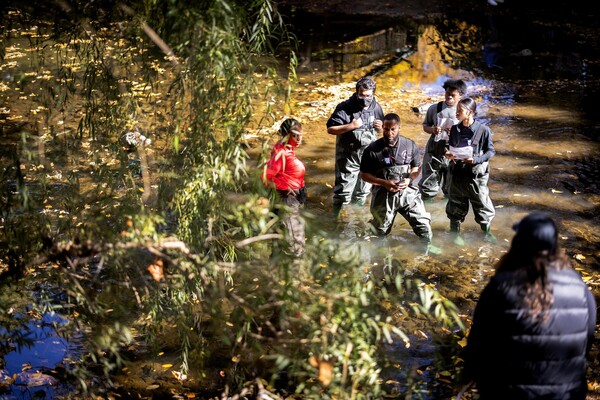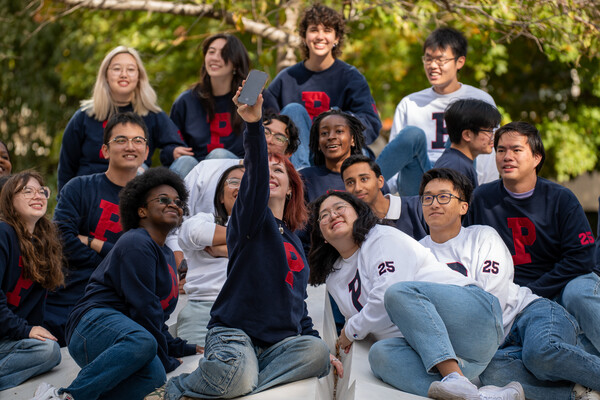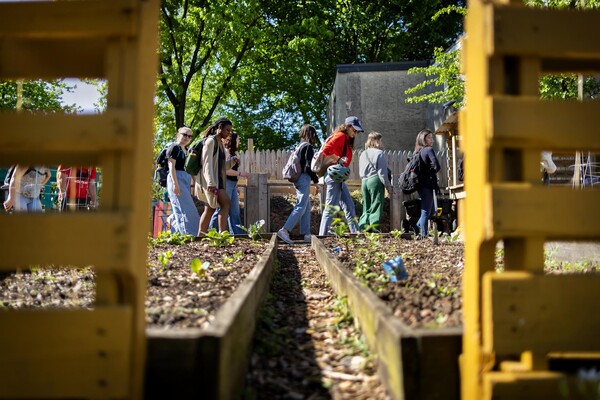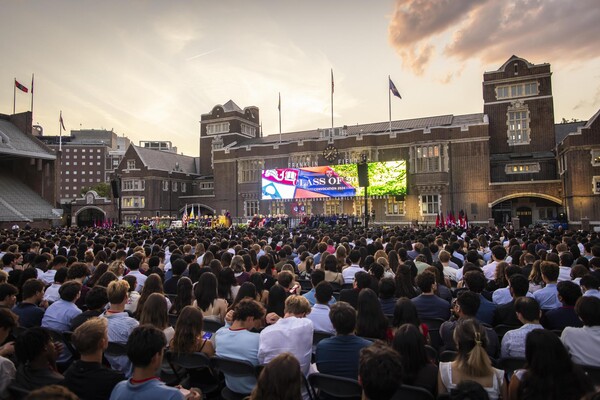Malaysia, still in recovery
Penn assistant professor of earth and environmental science Ben Horton spent three weeks this spring in Malaysia with a Penn-led multinational team of scientists seeking to better understand the causes and effects of the Indian Ocean Tsunami of December 26, 2004.
The team, which includes undergraduate and graduate students, is using research methods drawn from science, engineering and social science to collect data on the height, velocity and damage of the tsunami flood along the entire coastline of the Malay-Thai Peninsula.
What follows are excerpts from a daily diary Horton kept for the Current:
Thursday, May 5: Our trip to Malaysia begins with the drive to JFK Airport. We get on a flight to Anchorage, Alaska, then to Taipei, Taiwan, and on to our final destination, Penang, Malaysia. The journey takes about 28 hours and we lose one day. This I find very hard to understand. Does this mean I am a day older?
Friday, May 6: We begin our fieldwork straight away with a field trip to the west coast of Penang, Balik Pulau. The first site is Pasir Panjang Beach, an area where the waves had a big impact—18 people were killed as they picnicked on the beach. We have seen some very disturbing photos and videos of the event and its aftermath. The waves also caused considerable structural damage to the beach area. We then visit a Chinese fishing village, Pulau Betong, that was hit badly. Only one person was killed in this village, but there was damage to buildings and to fishing boats. The government provided boat owners with $1,000 but the cost of repairs to one boat is more like $10,000. Where will the rest of the money come from?
Sunday, May 8: An early start, as we leave the hotel about 6.15 a.m. The surveyors want to get to the site before the tide starts to come in. We are able to collect sediment samples that were deposited by the tsunami. We hope to identify that a tsunami produces sediment of a unique signature. This will help us determine if tsunamis occurred in the past. Two or three fishermen begin working at their boats around 8 a.m. We talk very generally about the tsunami and what happened to the boats on that day. The afternoon is spent knocking on the doors of the local houses requesting interviews with the residents. We also take photos of any watermarks and ask the interviewees to indicate how high up the wall the water level got to.
Monday, May 9: Awake to discover it is raining, heavily, with thunder and lightning. The first part of the morning, we plan to conduct more interviews with residents upstream from the coast at Pulau Burung. Part of the rationale for this is to identify how far the wave penetrated inland. We establish that the surrounding paddy fields were inundated, which confirms that we ought to talk with at least one farmer to discover the impact on agriculture.
Thursday, May 12: I am not feeling very well and have not eaten for 24 hours, but am picked up at 8 a.m. and taken up to the site in the north of the island. We begin by looking over the area to gain a sense of the damage to housing along the coast. We then stop at a local beachfront restaurant and ask the lady there if she’d be willing to be interviewed. She agrees. After the interview we go down to where the wrecked houses are. We ask some of the residents who are still living there if they could point out the worst affected houses. One resident takes us to his own house and shows us the damage. He also speaks about the level of inundation in the house, which looks to be about three meters above sea level. Then we interview a restaurant owner who not only had her restaurant right on the coast (directly impacted by the tsunami) but was injured and hospitalised by the wave. As it happens she also speaks excellent English so I can interview her without the aid of interpreters. This interview is the only time one of the questions generates a strong emotional response. The question—“What is the biggest change in your life as a result of the tsunami?”—makes her think about what she has lost, compared with some others who had lost loved ones. She becomes quite emotional when she mentions children and the elderly, and is overcome for a moment or two. I don’t believe this particular question was the cause of the emotional outburst. Rather it was the whole process of reminiscing about the events of the day and the images of bodies being pulled out of the surf. Despite this, I actually get the impression that she appreciates the opportunity to “unload” some of her feelings and impressions of the event.







